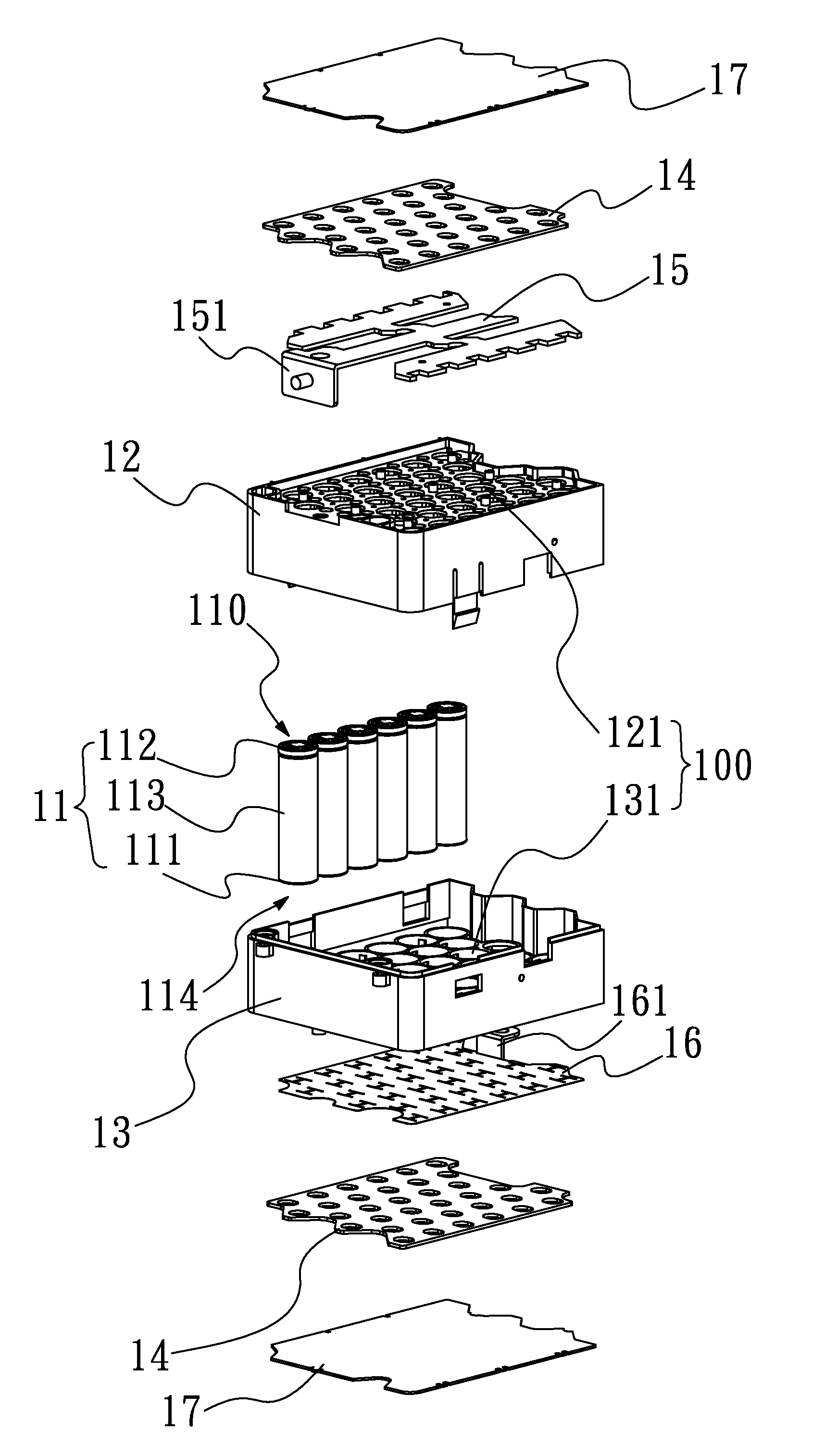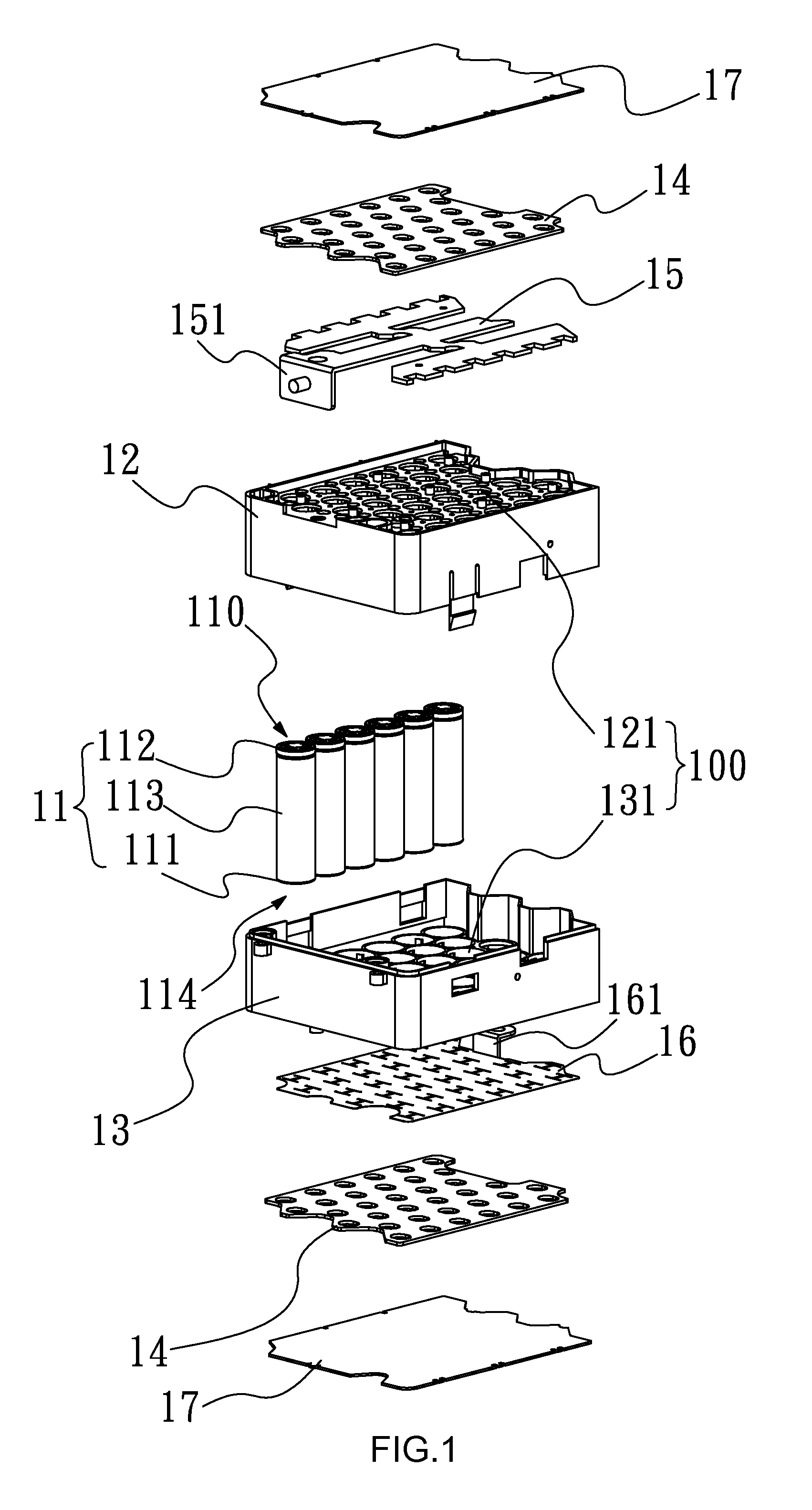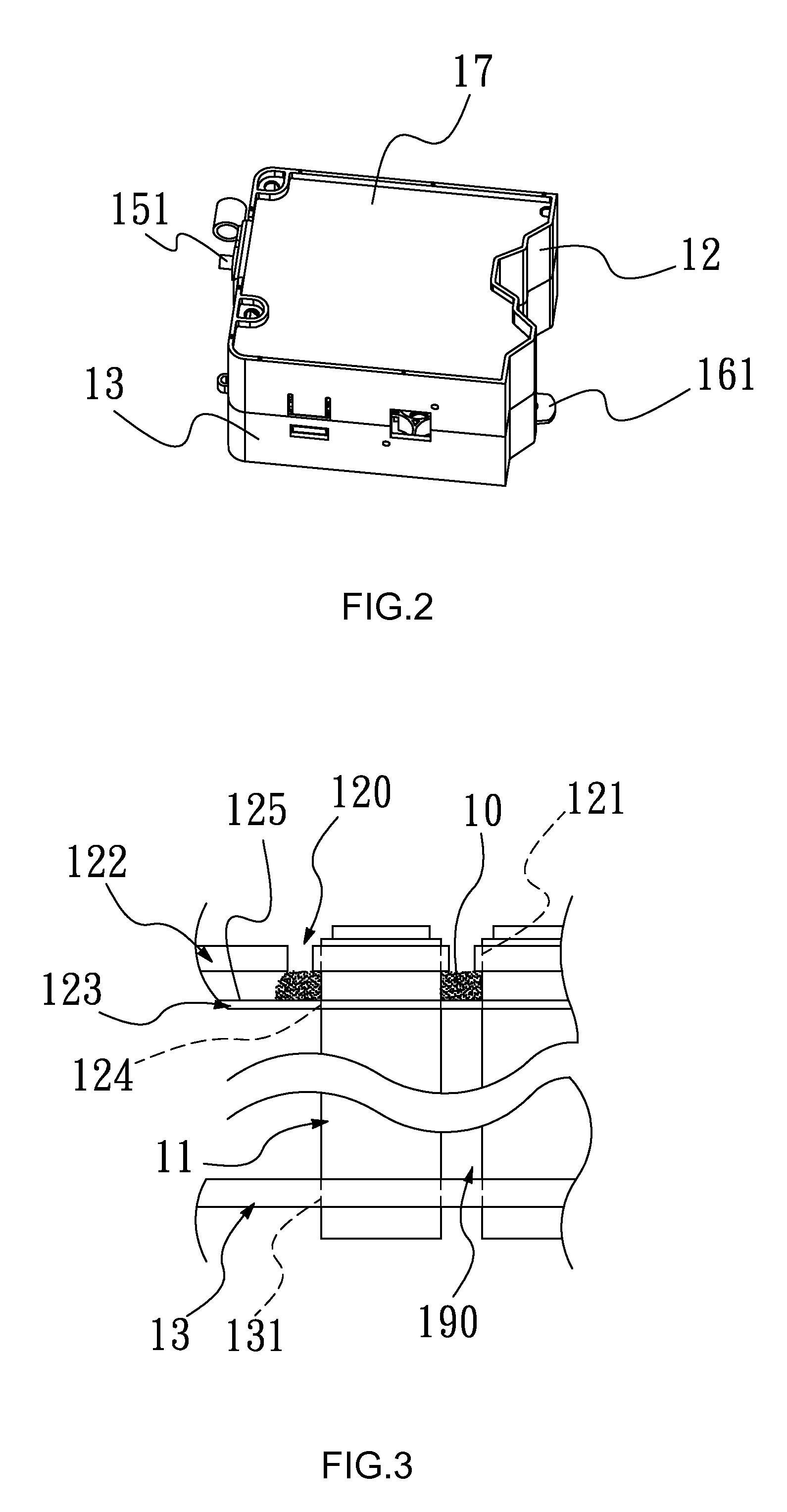Battery assembly with adhesive stop mechanism
a technology of stop mechanism and battery, which is applied in the direction of batteries, cell components, electrical devices, etc., can solve the problems of battery cell temperature rise, inability of small number of cells under thermal runaway to propagate into full pack fire, and cell thermal runaway, etc., to achieve the effect of facilitating heat dissipation, enhancing overall heat dissipation efficiency, and large contact surface area
- Summary
- Abstract
- Description
- Claims
- Application Information
AI Technical Summary
Benefits of technology
Problems solved by technology
Method used
Image
Examples
Embodiment Construction
[0032]The following description is provided to enable any person having ordinary skill in the art to make and use the invention, and is provided in the context of a particular application and its requirements. Various modifications to the embodiments will be readily apparent to those skilled in the art, and the principles defined herein may be applied to other embodiments and applications without departing from the spirit and scope of the invention. Thus, the present invention is not intended to be limited to the embodiments shown, but is to be accorded the widest scope consistent with the principles, features and teachings disclosed herein.
[0033]FIGS. 1, 2 and 3 show the battery assembly according to the first preferred embodiment of the invention, whose frames comprise an adhesive stop mechanism. The battery assembly comprises multiple battery cells 11, a primary retaining frame 12, a secondary retaining frame 13, a common electrode and a bonding layer 10. The common electrode is ...
PUM
| Property | Measurement | Unit |
|---|---|---|
| temperature | aaaaa | aaaaa |
| temperature | aaaaa | aaaaa |
| thermal conductivity | aaaaa | aaaaa |
Abstract
Description
Claims
Application Information
 Login to View More
Login to View More - R&D
- Intellectual Property
- Life Sciences
- Materials
- Tech Scout
- Unparalleled Data Quality
- Higher Quality Content
- 60% Fewer Hallucinations
Browse by: Latest US Patents, China's latest patents, Technical Efficacy Thesaurus, Application Domain, Technology Topic, Popular Technical Reports.
© 2025 PatSnap. All rights reserved.Legal|Privacy policy|Modern Slavery Act Transparency Statement|Sitemap|About US| Contact US: help@patsnap.com



